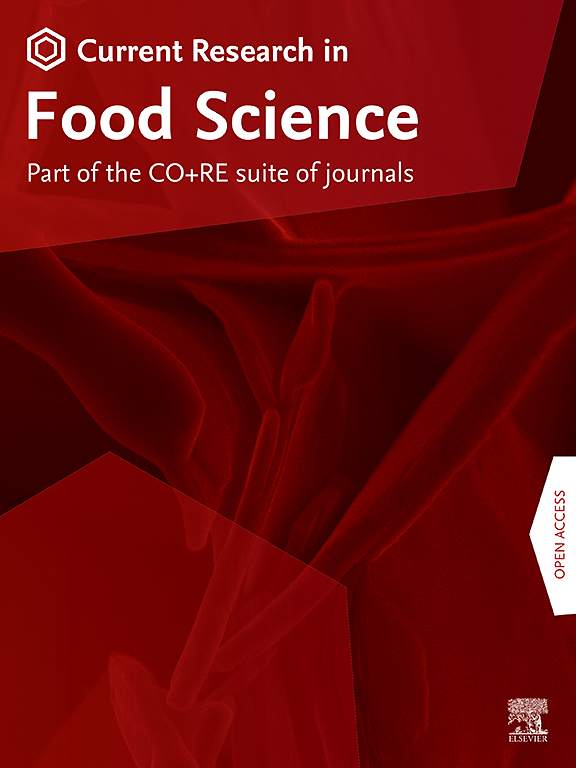SAPID: A Strategy to Analyze Plant Extracts Taste In Depth. Application to the complex taste of Swertia chirayita (Roxb.) H.Karst.
IF 6.2
2区 农林科学
Q1 FOOD SCIENCE & TECHNOLOGY
引用次数: 0
Abstract
Analyzing bitterness is challenging because of the diverse range of bitter compounds, the variability in sensory perception, and its complex interaction with other tastes. To address this, we developed an untargeted approach to deconvolute the taste and molecular composition of complex plant extracts. We applied our methodology to an ethanolic extract of Swertia chirayita (Roxb.) H.Karst., a plant recognized for its distinctive bitterness. Chemical characterization was performed through nuclear magnetic resonance spectroscopy experiments together with untargeted liquid chromatography-high resolution tandem mass spectrometry analysis coupled to a charged aerosol detector. After clustering the fractions based on chemical similarity, we performed free sensory analysis and classical descriptive analysis on each cluster. Our results confirmed the attribution of bitterness to iridoids and highlighted the role of other important compounds in the overall taste. This method provides a systematic approach for analyzing and potentially enhancing the taste profiles of plant-based beverages.

SAPID:一种深入分析植物提取物味道的策略。獐牙菜(獐牙菜)复杂口感的研究H.Karst。
分析苦味是一项具有挑战性的工作,因为苦味化合物的种类繁多,感官知觉的可变性,以及它与其他味道的复杂相互作用。为了解决这个问题,我们开发了一种非靶向方法来解卷积复杂植物提取物的味道和分子组成。我们将我们的方法应用于獐牙菜(獐牙菜)的乙醇提取物。H.Karst。这种植物以其独特的苦味而闻名。化学表征通过核磁共振波谱实验、非靶向液相色谱-高分辨率串联质谱分析以及带电气溶胶检测器进行。在基于化学相似性聚类后,我们对每个聚类进行自由感官分析和经典描述性分析。我们的研究结果证实了苦味归因于环烯醚萜,并强调了其他重要化合物在整体味道中的作用。该方法为分析和潜在地增强植物性饮料的味道提供了一种系统的方法。
本文章由计算机程序翻译,如有差异,请以英文原文为准。
求助全文
约1分钟内获得全文
求助全文
来源期刊

Current Research in Food Science
Agricultural and Biological Sciences-Food Science
CiteScore
7.40
自引率
3.20%
发文量
232
审稿时长
84 days
期刊介绍:
Current Research in Food Science is an international peer-reviewed journal dedicated to advancing the breadth of knowledge in the field of food science. It serves as a platform for publishing original research articles and short communications that encompass a wide array of topics, including food chemistry, physics, microbiology, nutrition, nutraceuticals, process and package engineering, materials science, food sustainability, and food security. By covering these diverse areas, the journal aims to provide a comprehensive source of the latest scientific findings and technological advancements that are shaping the future of the food industry. The journal's scope is designed to address the multidisciplinary nature of food science, reflecting its commitment to promoting innovation and ensuring the safety and quality of the food supply.
 求助内容:
求助内容: 应助结果提醒方式:
应助结果提醒方式:


